Smart Boobies and Unfortunate Tuna Between St Lucia and Martinique

Sy-tucanon
Philip Fearnhead
Sat 1 Mar 2014 19:36
|
Saturday 1st March 2014: Position
14:35.95N 061:04.04W
The sail back from Rodney Bay to Fort de France was a fast reach in good
weather. With Mick having returned home, it fell to the skipper to do the
fishing. As usual, there were plenty of flying fish to entertain us.
Spooked by the whale like appearance of our hulls, they would explode from the
water around us like flocks of sparrows leaving a corn field (for those with
long enough memories!). Unlike sparrows they are limited to gliding, but
often give an extra “kick” when their tails touch the water to give them renewed
impetus and an extended flight (more than 100m in many cases). Most of the
fish we saw were very small (scarcely bigger than a finger), but there were
large ones also, the size of small herring, which are considered good eating in
the Caribbean.
As we progressed, we were joined by a pair of Booby birds (relatives of the
Gannet familiar to European sea farers). These birds were actively hunting
the flying fish disturbed by the boat, to the extent that they were trying to
catch them both in the water and in the air, sometimes pursuing a flying fish
back into the water right under the bows of the boat. This is the first
time that I have witnessed this behaviour. As if to prove it was a learned
behaviour, three more Boobies progressively joined the game, until all five gave
up after a couple of hours and sat down on the water to rest. Their
success rate seemed to be no more than one in every four or five attempts, but
it was sufficient to keep them going.
Flying fish are also a prime food for many predatory fish, such as Dorado
and Wahoo, but either there were no predators there or my fishing skill was
inadequate. That was, until we approached Diamond Rock off the south coast
of Martinique. Here there is a shallow bank (10m) which rises steeply from
depths of several hundred metres and seemed a likely place to find pelagic
predators. Sure enough, as we crossed the bank we hooked a tuna – the
first fish hooked in over two weeks fishing! Once safely landed and
despatched, it provided eight good size fillets, the first two of which we
consumed that evening after cooking them in foil on the BBQ. Such
meaty flesh was well complemented by a glass of red wine.
Diamond Rock was commissioned by the British navy in 1804 as HMS Diamond
Rock, a base for a cannon battery to keep the French pinned down in southern
Martinique. Cannon and provisions were hauled up the cliff faces to the
gun emplacements and were manned for 18 months until Napoleon ordered Admiral
Villeneuve to destroy it, Martinique being the birth place of Napoleon’s Empress
Josephine; and kill Horatio Nelson while he was at it. Nelson had false
information that Villeneuve would attack Trinidad, so was absent during
Villeneuve’s attack. Diamond Rock was lost, but Nelson survived to beat
Villeneuve later at the Battle of Trafalgar, although Nelson was not as
fortunate as Villeneuve who survived the battle.
Our arrival in Fort de France was inauspicious. The whole town
appeared to be closed for business during the five days carnival ending on Ash
Wednesday, 5th March. This meant three things to us: No checking in, no
provisioning, and lots of very loud music through the night. The following
morning we left for St Pierre in the north of Martinique hoping to find a
reduced Carnival fervour – and one of those mind blowingly good Coupe Antillaise
desserts at the Le Tamaya restaurant!
Diamond Rock
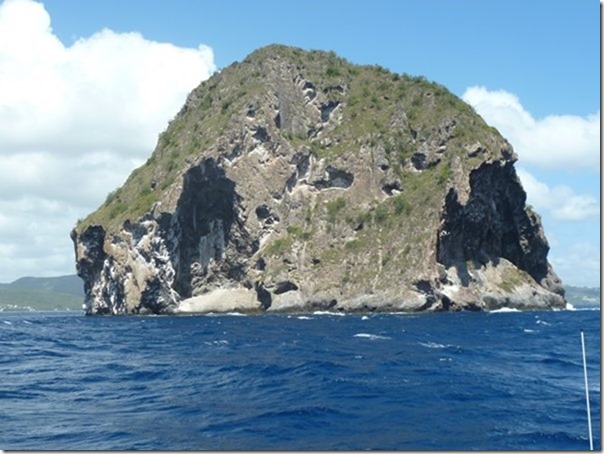 Boobies fishing around the boat
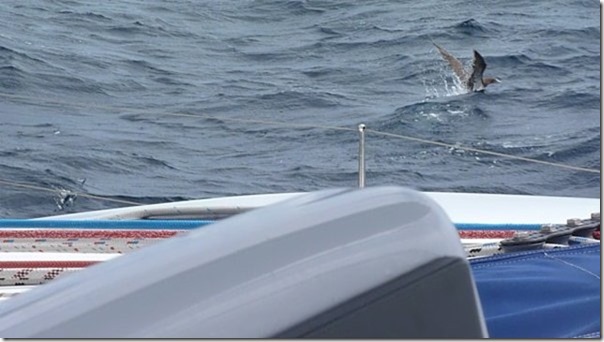 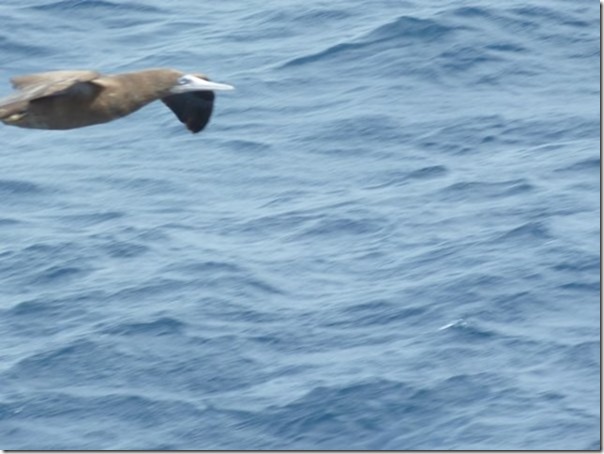 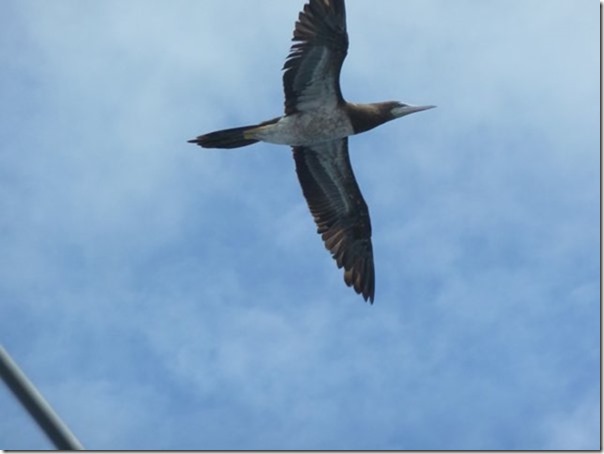 The Unfortunate Tuna
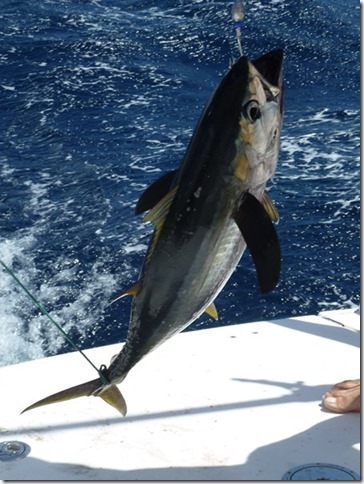 |